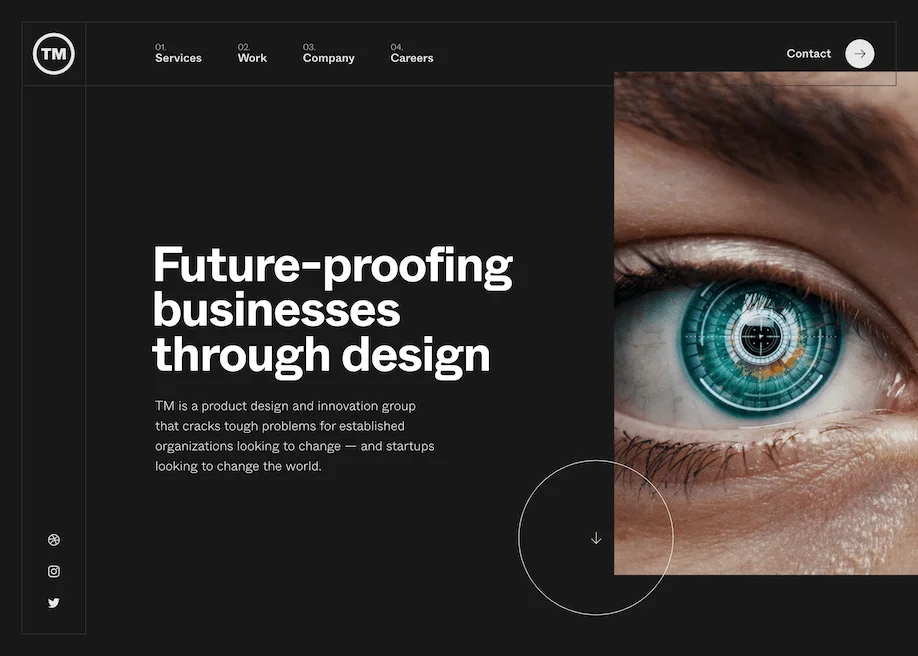Unlocking the Keys to Outstanding Site Layout for E-commerce Success
In the world of e-commerce, the layout of a web site is an essential aspect that can either make or break its success. A well-crafted internet site has the power to mesmerize site visitors, drive conversions, and eventually cultivate a faithful consumer base. Accomplishing outstanding internet site design for e-commerce involves even more than simply visual allure-- it needs a calculated mix of user-centric principles, conversion-focused layouts, intuitive navigation, compelling visuals, and a mobile-first method. Just how these elements intertwine to open the keys of shopping success is a diverse problem waiting to be untangled.

User-Centric Layout Concepts
Executing user-centric style principles is extremely important for creating a intuitive and seamless e-commerce system that caters to the needs and choices of on the internet consumers. By prioritizing the user experience, companies can enhance client contentment, rise involvement, and drive conversions. User-centric layout focuses on understanding the behavior, motivations, and objectives of customers to create an internet site that fulfills their assumptions effectively.
One basic element of user-centric style is functionality. Sites ought to be easy to navigate, with clear food selections, instinctive search capabilities, and straightforward checkout procedures. Streamlining the individual trip can reduce bounce rates and enhance the probability of repeat visits. In addition, receptive design is critical to ensure that the ecommerce platform comes across numerous tools, offering a regular experience for individuals no matter the display size - Website Designers.
Customization is one more crucial element of user-centric style. By leveraging information analytics and user understandings, businesses can customize the website web content, item suggestions, and advertising offers to specific preferences, improving importance and engagement. Inevitably, incorporating user-centric design principles can establish organizations apart in the competitive shopping landscape and foster lasting customer loyalty.

Conversion-Optimized Layouts
Exactly how can tactical format design improve conversion prices on e-commerce web sites? Conversion-optimized formats are essential in guiding customers via the getting trip seamlessly. A well-thought-out design can dramatically affect user habits and raise the probability of an effective conversion.
One secret facet of a conversion-optimized layout is clear and instinctive navigating. By guaranteeing that visitors can conveniently discover what they are looking for, whether it be item groups, search bars, or filters, you minimize the danger of them leaving your site without making a purchase. Additionally, strategically positioning call-to-action switches such as 'Add to Cart' or 'Buy Currently' can trigger individuals to take the desired activity swiftly.
Moreover, maximizing the design for mobile responsiveness is vital in today's digital landscape. With an expanding variety of customers going shopping on smart phones, having a design that adapts seamlessly to various screen sizes and resolutions can boost the overall customer experience and drive conversions.
Smooth Navigating Methods
Efficient e-commerce websites that focus on conversion-optimized layouts understand that seamless navigation strategies play an essential role in leading users in the direction of successful purchases. Additionally, integrating a prominent search bar allows customers to quickly situate products, additionally enhancing the general navigating experience.
Another crucial aspect of smooth navigating is using breadcrumb tracks, which reveal users their existing location on the internet site and provide simple accessibility to previous pages. This attribute helps users backtrack if required and improves general navigating effectiveness. Furthermore, tactically positioned call-to-action switches and links direct users towards crucial web pages such as item summaries, going shopping carts, and check out, streamlining the our website path to conversion. By incorporating these navigating techniques, ecommerce web sites can produce a intuitive and smooth browsing experience that motivates users to finish their purchases (Website Designers).
Engaging Visual Branding
Crafting a compelling aesthetic brand identity is important for establishing a strong online visibility in the competitive ecommerce landscape. Engaging visual branding surpasses simply having a logo design; it includes using colors, typography, imagery, and general style uniformity to develop a natural and unforgettable brand name picture. When carried out properly, visual branding can help e-commerce companies stand out from rivals, develop brand acknowledgment, and foster count on with consumers.
One secret component of engaging aesthetic branding is consistency throughout all touchpoints (Website Designers). From the website style to social networks blog posts and advertising products, maintaining a linked aesthetic language aids strengthen brand name identity and produce a smooth experience for clients. In addition, leveraging visually enticing content such as high-quality pictures and video clips can capture the interest of site visitors and communicate brand worths efficiently
Including narration elements right into visual branding can likewise develop a much deeper connection with clients by sharing the brand name's goal, values, and distinct marketing propositions in a compelling and visually enticing way. By concentrating on developing an impactful and aesthetically natural brand name identity, ecommerce organizations can boost their online existence and drive success in the electronic industry.
Mobile-First Strategy
Executing a mobile-first method is vital for maximizing the customer experience and making the most of reach in today's ecommerce landscape. With the exponential growth of mobile phone usage, guaranteeing that your e-commerce site is not only mobile-responsive however likewise prioritizes mobile users' needs is critical. view it Mobile-first design involves creating a website beginning with the smallest display size and then scaling up to bigger tools, making certain a seamless experience across all platforms.
Conclusion
To conclude, the key to attaining shopping success hinges on carrying out user-centric layout principles, conversion-optimized designs, smooth navigation techniques, engaging aesthetic branding, and a mobile-first technique. By concentrating on these important elements, organizations can develop phenomenal sites that draw in and keep consumers, inevitably resulting in increased sales and development. It is critical for ecommerce sites to focus on the individual experience and design elements in order to stand apart in the competitive on-line market.
Furthermore, responsive style is important to guarantee that the shopping system is available throughout different gadgets, offering a regular experience for individuals no matter of the screen dimension.
Efficient shopping sites try this web-site that focus on conversion-optimized designs recognize that seamless navigating methods play an essential duty in directing customers towards effective purchases. By integrating these navigation methods, ecommerce sites can develop a instinctive and smooth surfing experience that encourages customers to finish their deals.
With the rapid growth of mobile gadget use, guaranteeing that your shopping website is not only mobile-responsive yet also prioritizes mobile individuals' needs is vital. It is vital for e-commerce sites to focus on the individual experience and layout elements in order to stand out in the competitive on-line market.